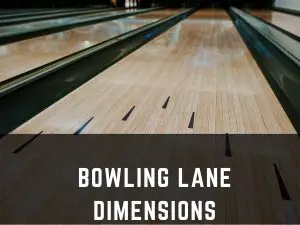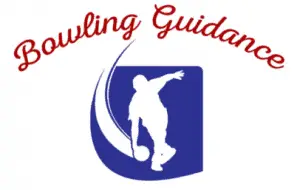 Have you ever met a football player who doesn’t the field measurement? I’m sure, you didn’t. Just like that, if you’re a bowler, you should learn the length and width of a standard bowling lane. Knowing the precise bowling lane dimensions of your favorite sports should be on top of your list. Not only does it make you smarter but also you can carry out a conversation with any professionals without any issue. They will surely know what you’re talking about. You can also correct others if they are mistaken. So, get ready, time for another precious lesson from one fellow bowler to another.
Have you ever met a football player who doesn’t the field measurement? I’m sure, you didn’t. Just like that, if you’re a bowler, you should learn the length and width of a standard bowling lane. Knowing the precise bowling lane dimensions of your favorite sports should be on top of your list. Not only does it make you smarter but also you can carry out a conversation with any professionals without any issue. They will surely know what you’re talking about. You can also correct others if they are mistaken. So, get ready, time for another precious lesson from one fellow bowler to another.
How Long is a Bowling Lane?
A succinct article on the standard measurements of a bowling lane or alley is sought-after by many of you. Don’t worry, I have come prepared. The narrow, straight, surface on which your bowling ball rolls has specific measurements. I’m sure you do know that. But do you know how long and wide is a bowling lane?
According to the Fédération Internationale des Quilleurs (FIQ) or in English, International Bowling Federation, a bowling lane should be 60ft long. So, the distance between the foul line and center of the first pin (headpin) is 60ft (18.288m). It is expected from the bowlers to cover this distance when they bowl without exceeding the foul line and hit the targeted pins/pockets after the ball travels the 60ft distance on the lane.
Currently, bowling is played by more than 90 million people all over the world. When a sport has its soaring popularity, a few modified rules can make their room into that. Therefore, having any confusion about the standardized rules is very normal than you think. Moreover, the rule of having 60ft lanes was established in New York in 1895. Back in the day, bowling was played differently in different regions, according to multiple historical records. That often changed the dimensions of the bowling lanes too. The introduction of the standard set of rules made bowling much fairer and more competitive.
I know, nowadays, by ‘bowling alley’, we mean the bowling center or the house we go to roll our balls. However, the terminology ‘bowling alley’ originally refers to the bowling lane, instead of the establishment. The set of rules has mentioned bowling alley instead of bowling lane. Indeed, FIQ and USBC deal with various constituents, and interestingly, one of the common ones is the dimensions of the bowling alley/lane.
How Wide is a Bowling Lane?
In almost every sport, having the fundamental knowledge of the playing area or surface is paramount. The same goes for bowling, there is no exception. Being well-aware of how the bowling lane works and learning precise calculations of your shots will make you’re a successful bowler, and you cannot do that without having an idea of the lane dimensions.
A while ago, I gave you the idea about how long your bowling ball is going to travel to hit the pins in the deck. Now let me enlighten you on how many limitations you will have when you need to move left or right. Unlike football, you will have much marrow space to roll your ball, but trust me, that’s more than enough.
According to the FIQ (International Bowling Federation), the width of a bowling lane is 42 inches (1.0668m). The rule stipulates that the combined width of the gutter and bowling lane shouldn’t be less than 60 inches or more than 60.25 inches. The 42 inches wide lane is supposed to have 39 boards. Bowlers use these boards as the target guideline. Although most bowlers rely on the arrows more than they do on the boards. Using a board as a guideline will help you achieve better precision in shots, and consequently, a higher bowling average.
Other Measurements
The bowling lane dimensions are not restricted to just its width and length. The lane anatomy shows there are several other features that you should know about a bowling lane that you may find useful, if not now, someday. As a beginner, your main concern is limited to how to knock down the pins and have a higher score at the end of the game. But these important aspects of bowling lanes are also essential to learn. Knowing more about bowling lane arrows, approach dots, approach area, pin decks, pins, etc. can help you master the art of bowling.
Bowling Arrows:
You can find a set of seven arrows on the lane, located at a distance of 15ft (4.57 m) from the foul line.
Approach Dots:
Similar to the bowling lane arrows, you can see there are two sets of approach dots on the lane for your guidance. The first set of approach dots is located at a distance of 12 ft (3.66 m), and the second set is placed at 15 ft (4.57 m) from the foul line.
Lane Approach:
The area where you stand and move forward to throw the ball on the lane. It is 15 ft (4.572m) behind the foul line.
The Pin Deck and Pins:
You can see the rack of bowling pins in an equilateral triangle that is 36 inches (91.44cm). Each pin is aligned and positioned 12 inches (30.48cm) away from each other, and yes, the distance is measured from the pins’ center to center.
Conclusion
Over the past few decades, there have been a lot of changes and updates on bowling specifications. But not much has changed in the width and length of the bowling lanes. As long as your usual bowling centers have 60 feet long and 42 inches wide bowling lanes, you shouldn’t worry about anything. Surely, they have made the lane dimensions as per the rules. Just make sure you know them and keep them memorized, in case you ever need to mention it to anyone.

